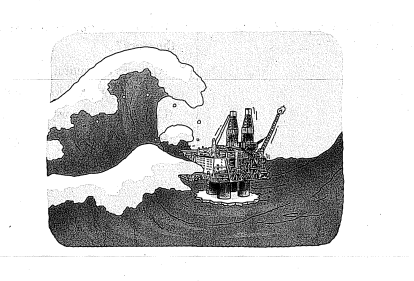Questions 1-6 are about the following passage.
Freak waves are giant walls of water that happen in deep, stormy oceans. Sometimes they can reach up to 100 feet high, which is as high as a ten-story building. The waves are very dangerous and have been known to sink very large ships.
For years, scientists thought that freak waves were only in stories. Sailors would tell stories of these huge, 100-foot killer waves, but many people did not believe them. That all changed one day when an oil rig was hit by a wave of an impossible size.
It happened in the ocean near Norway. The Draupner oil rig was hit by a wave that was nearly 100 feet tall. The oil rig was measuring the height of all the .waves when suddenly a huge wave rose up from the ocean and smashed it. That was one of the first pieces of evidence that the sailors might have been right. Freak waves only happen in very deep water so people have not had many chances to see them.
Normal waves are predicted using a mathematical equation called the linear effect. This math equation says that a wave that big is possible once every ten thousand years. But these waves happen a lot more than that. In the waters off of South Africa, these waves happen a lot. Since 1990, twenty ships have been hit by waves that seemed too big to be real. These massive waves do exist and have proved a lot of scientists wrong.

1.
What is the main idea of the passage?
2.
In line 4, the word freak is closest in meaning to
3.
In line 8, the word suddenly is closest in meaning to
4.
What country was the Draupner oil rig in?
5.
In line 9, the word it refers to
6.
Which of the following does NOT happen because of a freak wave?